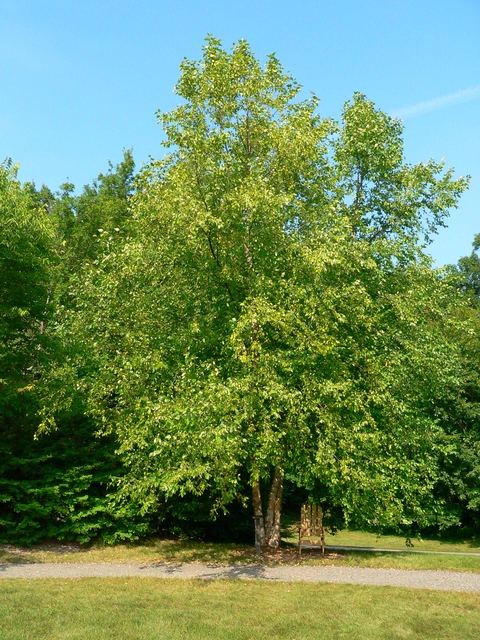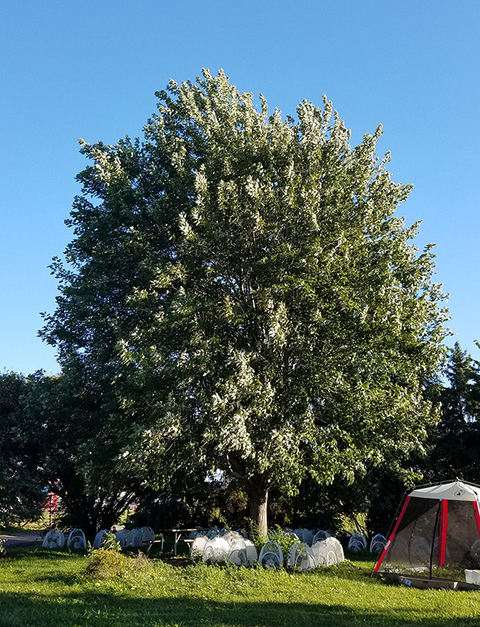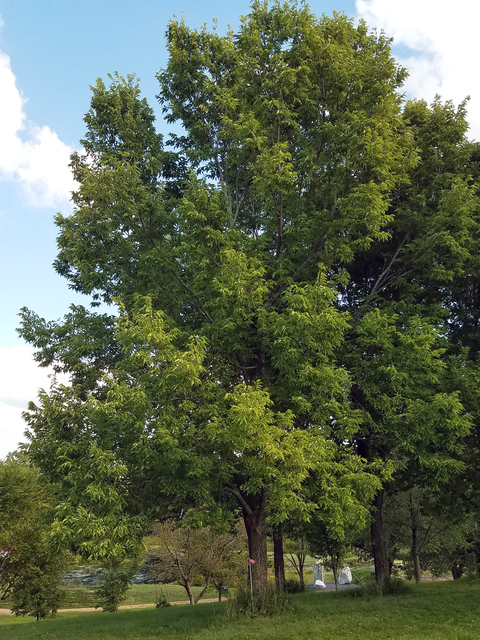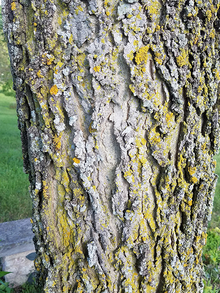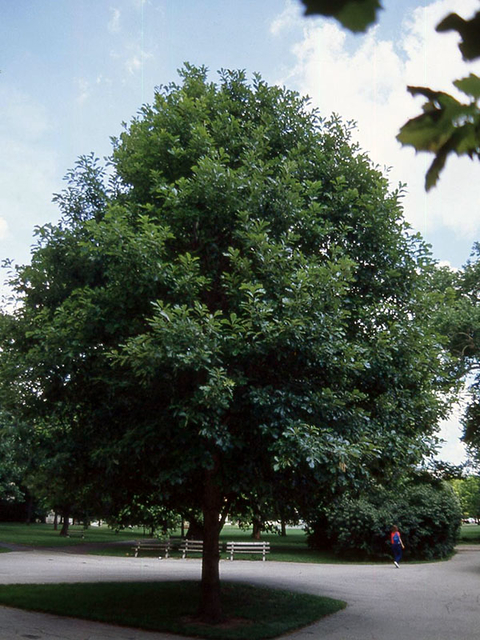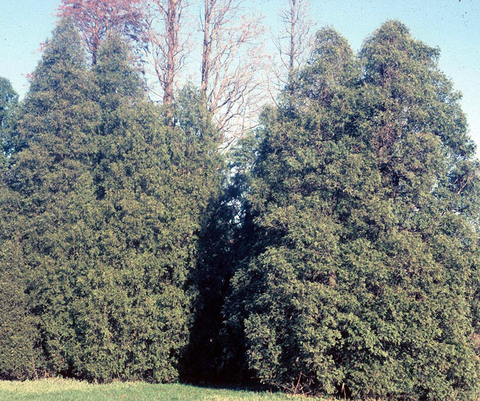Planting diverse woody species will help your landscape survive future insect and disease outbreaks.
Many municipalities maintain a list of suggested replacement trees for ash, so check with your local city or county’s forestry division. Consult an arborist or forester to ensure you plant the right trees in the right spot.
If you already have an ash tree in your yard and it is healthy, there is no reason to remove it. As long as it is a low-maintenance plant, keep it in your landscape. But we strongly recommend not to plant additional ash.
Here are six native tree species to consider for replacing your ash. Each species has its own unique characteristics and is adapted to different sites.
River birch
A stately tree for the Twin Cities Metro or Blufflands
- River birch (Betula nigra) is adapted to warm climates as far south as Florida.
- It can thrive in floodplains and near stream banks that are sometimes flooded.
- The river birch can be a single- or multi-stemmed tree, making it a great tree for the landscape around your home.
- Its exfoliating bark ranges from copper to almost white making it stand out from other common trees.
- The 'Heritage' variety is resistant to bronze birch borer.
Silver maple
A fast-growing tree that provides a lot of shade
- Silver maple (Acer saccharinum) is one of the fastest-growing maples.
- It is common in southern Minnesota and grows into the north-central part of the state, typically along rivers.
- Silver maple is widely planted as a shade or ornamental tree. Its leaves are dark green on top and “silvery” on the bottom, giving the tree its name.
- Like all maples, shallow roots are an issue.
- A cultivar of our native, the 'Silver Queen' silver maple is very well built, site tolerant and about 2/3 the size of the species at maturity.
- Great shade tree if given plenty of room. Do not plant it on a boulevard.
Hackberry
A hardy shade tree that can survive a tough environment
- Hackberry (Celtis occidentalis) is a hardy tree that can grow in harsh urban environments.
- It can survive heat and drought or wind and ice, making it suitable for Minnesota’s climate.
- In its native habitat, it can be found in floodplains and along rivers in the central and southern portions of the state.
- Its corky bark sets hackberry apart from other trees in Minnesota. Birds and other wildlife are attracted to its berry-like fruits.
- This deciduous tree does well in just about any type of soil as long as it is not a swamp.
Disease-resistant elms
Bringing back a charismatic tree to Minnesota’s landscape
Research and testing have resulted in many varieties of disease-resistant elm trees. These elms have been planted widely across Minnesota.
- They tolerate wet conditions.
- They require full sun for the best growth.
- Valley Forge and Princeton varieties are most similar to native American elm and have the classic vase-like form when mature.
- Hybrid Asian elms tend to be shorter than other varieties and grow well on tough sites.
Consult your tree or nursery supplier for suggestions on the right variety for the qualities you want in an elm.
To help minimize Dutch elm disease:
- Elm varieties should never represent more than 5% of the total tree population.
- Elm trees should never be planted closer than 60 feet from each other.
Swamp white oak
A tree predicted to do well in Minnesota’s future climate
- Also known as bicolor oak (Quercus bicolor), this species can tolerate heavy and wet soil, which makes it a good replacement for black ash.
- While native only to southeastern Minnesota, swamp white oak is known as a climate change "winner" and has been planted with success in research trials in northern Minnesota.
- Swamp white oak does not grow as tall as bur oak and white oak, two similar species.
- The tree is less susceptible to oak wilt fungus than red oak.
- The acorns on this tree will attract a number of wildlife species.
Northern white cedar
A conifer characteristic of the Minnesota Northwoods
- Northern white cedar (Thuja occidentalis) can form dense stands and survives well in moist soils. If you’re looking for an ornamental variety, it is sold under the name arborvitae.
- Northern white cedar trees will attract wildlife, especially white-tailed deer. Cedar is one of the most heavily browsed tree species by deer.
- Protect seedlings with fencing around trees or groups of trees.
- Deer may congregate in stands of cedar in the winter to avoid heavy snow depths in other open areas, such as those with deciduous trees.
For more options, the UMN Forest Resources trees, shrubs and vines database lists and describes different types of trees, shrubs and vines.
See also:
Reviewed in 2024


